#vacation from marriage 1945
Explore tagged Tumblr posts
Text








Deborah Kerr & Glynis Johns Vacation from Marriage (1945), directed by Alexander Korda
#vacation from marriage#perfect strangers 1945#deborah kerr#glynis johns#filmedit#filmgifs#oldhollywoodedit#old hollywood#classicfilmsource#classicfilmedit#cinemaspast#*#every movie can have lesbian subtext if you try hard enough#dizzy (glynis) placing her hand under cathy's (deb) head for her to use as a pillow is so...#wow... the power of women...
207 notes
·
View notes
Text

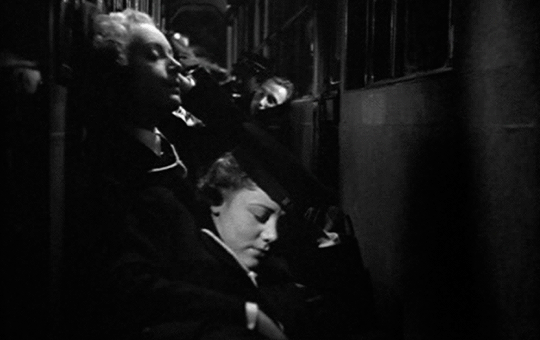

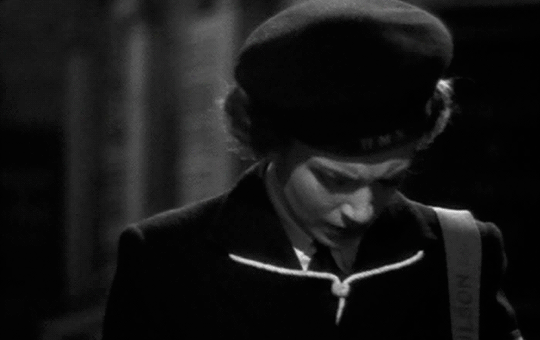
Deborah Kerr and Glynis Johns in VACATION FROM MARRIAGE (1945) dir. Alexander Korda
#oldhollywoodedit#deborah kerr#glynis johns#vacation from marriage#perfect strangers#1945#*#presented without comment
182 notes
·
View notes
Text

Deborah Kerr and Glynis Johns enjoy a coffee break on set of PERFECT STRANGERS (1945), directed by Alexander Korda (aka VACATION FROM MARRIAGE)
61 notes
·
View notes
Text
Meet The Woman Who Made Polaroid Into A Cultural Icon
Meroë Marston Morse, an Art History Undergraduate, Led and Transformed the Camera Company into a Brand Beloved by Photographers to This Day.
— By David M. Barreda | March 27, 2024
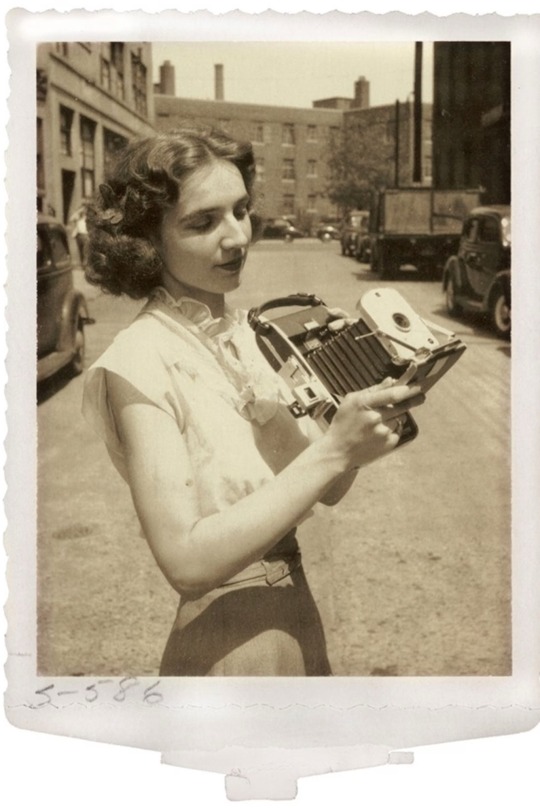
Meroë Marston Morse joined Polaroid just weeks after graduating from Smith College—and quickly rose to become one of the iconic company's most visionary leaders. She's seen here in a test photograph taken by Polaroid laboratory staff in the 1940s. Polaroid Corporation Records, Baker Library, Harvard Business School
Polaroid. The Tconic Camera brought photography into the hands of millions beginning in the 1940s. It made anyone a photographer with a push of a button, developing the pictures right in front of your eyes.
At a time when camera innovation was led almost exclusively by men, Polaroid was different in another way too: During her relatively short time at the company, a young art history grad named Meroë Marston Morse was one of Polaroid’s most important visionaries, ultimately rising to be director of the Special Photographic Research Division with 18 patents to her name.
As a senior photo editor at National Geographic, I have had a lifelong love for photography. Since I was a child, I remember watching family members use Polaroids to record the mundane moments of a vacation, while I used a Nikon camera with 35mm film. But when a photographer friend later showed me how to use a toothpick to push the dyes of a Polaroid that was mid-development—resulting in a more painterly, more impressionistic final image—I became a fan.
I know a fair bit about Polaroid and its founder, Edwin Land. But when I read Morse’s name for the first time recently, I was intrigued to learn more about role she played during her two decades there.
A New Kind of Camera Company
Morse joined Polaroid in 1945 just weeks after graduating from Smith College, having studied art history with Clarence Kennedy. A friend and associate of Edwin Land, Kennedy often recommended his best students to work at the camera company.
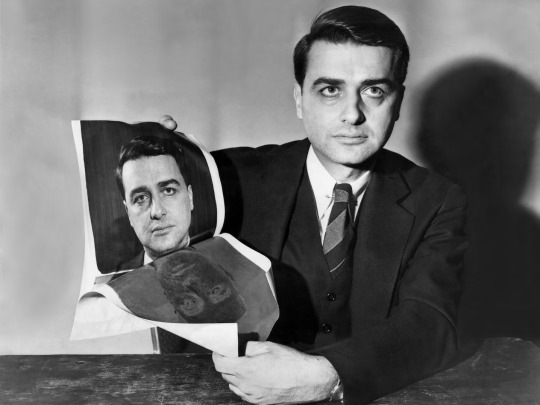
American scientist and inventor Edwin Herbert Land demonstrates his instant camera or Land Camera, manufactured by Polaroid, circa 1947. Photograph By Sam Falk, The New York Times/Redux
For Land, Morse became “a soul mate, a work mate, and a protector,” writes Victor K. McElheny in his biography of Edwin Land, Insisting on the Impossible. Morse was a natural to the Polaroid method, which McElheny quotes one of the company’s inventors as saying was, “to propose the hypothesis, to test the hypothesis, to modify the hypothesis, to test with another experiment—a sequential train moving at high speed, several hypotheses and experiments per hour.”
A few short months after her arrival, Morse was managing the black-and-white film division, where she led her team through round-the-clock shifts to transition the company away from monochromatic sepia prints to truly black and white Polaroid films.
The process was full of challenges. Not only did the crystals in the darkest areas of a print become reflective, but the paper they used collected fingerprints easily. Perhaps worst of all, some of the prints would fade after a few months. Chris Bonanos, whose book Instant documents the camera company’s history, writes that Land called the creation of black-and-white film “among the toughest things Polaroid ever pulled off.”
And Morse was at the center of it all, former Polaroid employees John and Mary McCann told me on a recent call. Morse’s team would analyze tiny incremental variances from a standard exposure Mary said, and Morse herself “had an eye for these differences” thanks to her art history training. “She and Land built it from the first experiments in the lab, all the way through the billion-dollars-worth of film they sold,” John adds.
A Marriage of Science and Art
John McCann tells me his time at Polaroid reminded him of the Renaissance, when “the best scientists were the best painters, and they did everything.” Artists at Polaroid were integral to science and experimentation, and their perspectives were as important as those of trained chemists.
Within Morse’s lab, there was a strong dedication to making technology to suit artists. She served as the liaison between scientists and the photographers who consulted for the companies—building relationships with fine art photographer Minor White, color art photography pioneer Marie Cosindas, and landscape photographer Ansel Adams.
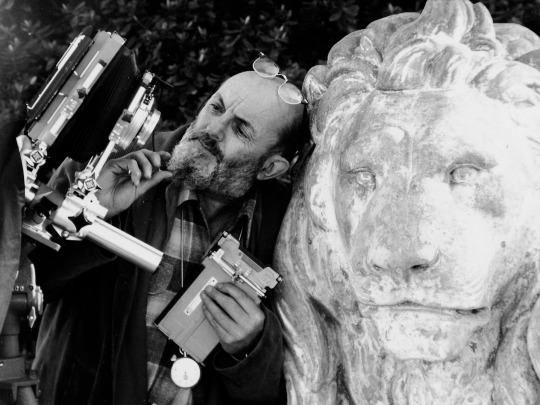
Photographer Ansel Adams consulted with Polaroid in various capacities. In a letter to Morse in 1953, he complained about the company’s ads, which he said had, “served to place emphasis on the casual, amateur use of the camera and process which has, I think, minimized the more important aspects. Most people think of it as a semi-toy.” Photograph By Emmanuel Dunand, AFP/Getty Images
Adams was already a well-established, large-format, black-and-white photographer by the time he began to consult for Polaroid in 1948. His image, Monolith, the Face of Half Dome, Yosemite National Park, made in 1927, had landed him on the photography map. Yet Adams was very interested in Polaroid’s technology, particularly the cameras and the black-and-white film that Morse was developing. The two were in nearly constant contact.
Adams helped establish a process that photographers in the field used for feedback long before the advent of the digital camera: He would take a Polaroid to test the composition and exposure of an image before making a final image on the negative.
Legacy
Morse died from cancer in 1969 at the age of 46, before Polaroid had expanded into a global brand and cultural touch point, before the toy camera craze had peaked, and long before Polaroid filed for bankruptcy in 2001.
In a companywide memo announcing her passing, Polaroid executive Richard Young wrote, “To those who knew and loved Meroe, our lives were enriched and enlarged. Her kindness, concern and interest in everyone were exceeded by her generosity.”
By the 1970s and 80s, other camera companies started to emulate Polaroid’s point-and-shoot approach and aesthetic. In the late 2000s, photographers around the world went into mourning when the last Polaroid films hit their expiration dates after the company’s bankruptcy.

"9-Part Self Portrait," a collage of large-format Polapan prints by artist Chuck Close, is displayed at Sotheby's during a preview of The Polaroid Collection, a collection of fine art photographs that Land launched in the 1940s. Morse was key to building the company's relationships with artists in the collection. Photograph By Emmanuel Dunand, AFP/Getty Images
But in early 2008, as the last factories were winding down, Polaroid enthusiasts Florian ‘Doc’ Kaps and André Bosman raised over half a million dollars to rescue the factories, the film, and most importantly the chemistry knowledge of the company—and eventually they brought Polaroid film back to market.
Today, in a photography world where digital is king, the spirit that Morse and others brought to the company still lives on for photographers everywhere.
4 notes
·
View notes
Note
Hi! Ok, so I've watched Tea and Simpathy last night and now I AM OBSESSED. Which Deborah Kerr movie should I watch next? Thanks🌻
ahhhh!!!! I'm so happy you liked tea and sympathy!!!!!!!! here's some more deborah kerr movies I love!!!!!
the innocents (1961) dir. jack clayton : adaptation of henry james' turn of the screw, kerr plays the governess and her acting + the cinematography is insane, one of my favorite movies in general (not just deborah kerr ones lol)
the life and death of colonel blimp (1943) dir. pressburger & powell : kerr plays not one, not two, but THREE characters and looks so good in technicolor you could die !!!!! (the rest of the movie is also really really good and moving)
the night of the iguana (1964) dir. john huston : tennessee williams adaptation so be warns the dramatic parts are DRAMATIC, this is one of my fav plays of his!!! in typical kerr fashion her character is incredibly moving, slightly (or more than slightly) crazy, and just makes you THINK!
the grass is greener (1960) dir. stanely donen : romantic comedy, and kerr is hilarious and so so good, robert mitchum and cary grant are so funny in this too, all around a very fun hilarious movie I've already seen twice i liked it so much
an affair to remember (1957) dir. mccarey : just a classic, cary grant and kerr are so good together and the story is kind of silly in typical old hollywood romatic drama style, but its not too silly that it doesn't WORK with kerr and crant carrying the film through!!!
vacation from marriage (1945) dir. alexander korda : first of all deborah kerr has a girlfriend in this movie who is none other than glynis johns! also its super funny, its about a husband and a wife reuniting after they both had gone off to war and how different they've become and how they've both been able to be more themselves once they had a chance to not be so strictly a Couple and how that plays out
the chalk garden (1964) dir. ronald neame : okay hear me out, the plot is kind of dramatic and could be dismissed as slightly silly and while it could have been done better, I think its good lol kerr is a governess here again! we love to see it <3 (also hayley and john mills are in this)
the naked edge (1961) dir. michael anderson : there's nothing like out of the box special about this movie, the plot isn't going to shock you, but i think it's done very well and the cinematography snaps and kerr is really good!!!! also i love a dark sinister gloomy atmosphere and its done very well here!
bonjour tristesse (1958) dir. otto preminger + 10. from here to eternity (1953) dir. fred zinnemann : these are both great movies, well made, interesting compelling plots, kerr is obvs amazing in both, don't really have anything else to say (put them together bc this list is getting long he he)
beloved infidel (1959)dir. henry king : insanely bad, melodramatic done so poorly that you laugh out loud when someone dies.........including it on the list bc you'd probs have a lot of fun watching this if you're in the mood to make fun of a dumb movie lol
#check out my list of deborah kerr movies on my letterboxd!#asks#deborah kerr#anon#also look in to the king and i and black narcissus and decide for yourself about those
10 notes
·
View notes
Text

The Last Movie I Watched...
Vacation From Marriage (1945, Dir.: Alexander Korda)
1 note
·
View note
Photo
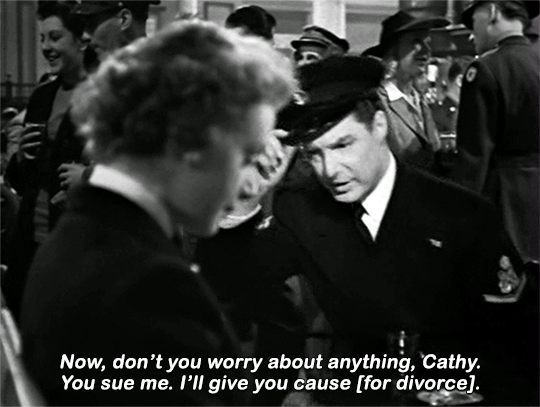
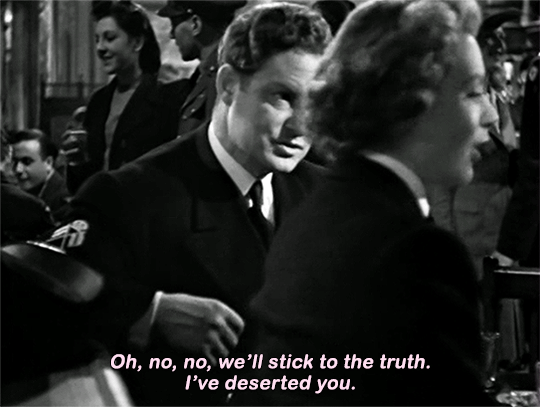
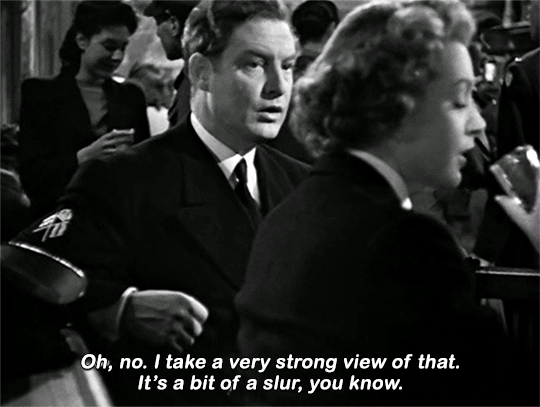
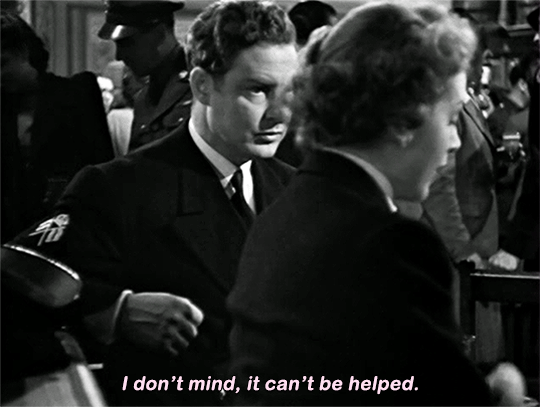
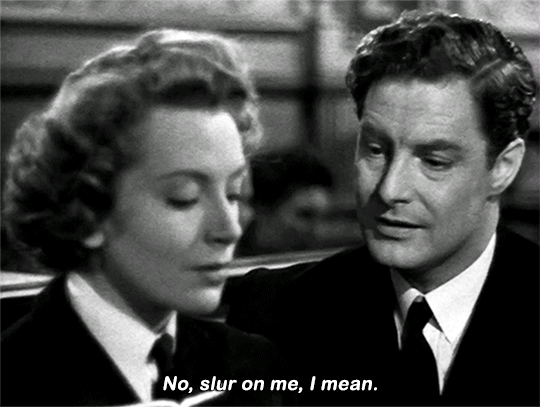
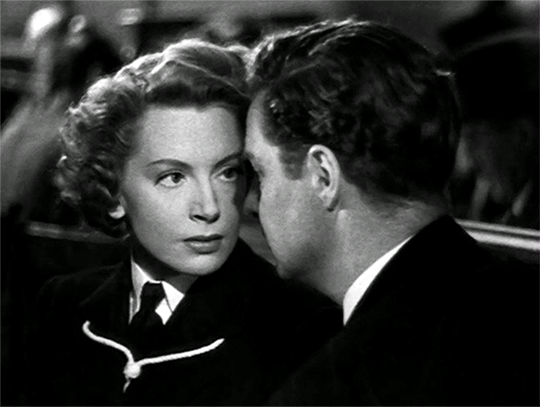
VACATION FROM MARRIAGE (1945) | dir. Alexander Korda
Deborah Kerr and Robert Donat play a dull married couple, separated by their enlistment into the Navy during World War II, and who reunite after three years to find that they have become very different people.
“This new emphasis on living life to the full put increasing pressure on existing relationships. And during the [Second World] War marriages broke down in record numbers. The divorce rate multiplied by ten, even though the laws surrounding divorce remained extremely restrictive. Even when both parties wanted the divorce, it wasn’t that easy to get one. The law did allow divorce on the grounds of insanity or desertion, but that was very rarely granted. The quickest way to get a divorce was to go for adultery.” [A Very British Romance with Lucy Worsley, BBC, 2015]
#vacation from marriage#vacation from marriage 1945#perfect strangers#usercandy#useralex#romancegifs#useranais#cinematv#classicfilmblr#userdeforest#usertimeless#oldhollywoodedit#ritahayworrth#cinemapast#usertiffany#retrotvblr#dailyvintageblr#classichollywoodedit#filmedit#userdestry#classicfilmcentral#classicfilmedit#moviehub#bbelcher#chewieblog#userlera#userel#userangela#deborah kerr#robert donat
454 notes
·
View notes
Photo




Perfect Strangers (Vacation from Marriage) (1945) Alexander Korda
March 30th 2020
#perfect strangers#vacation from marriage#1945#alexander korda#robert donat#deborah kerr#glynis johns#ann todd#roland culver#caven watson
7 notes
·
View notes
Photo

1 note
·
View note
Text
Apparently today was destined to be Alexander Korda film day here chez Gray; I finished That Hamilton Woman and moved on to Perfect Strangers/Vacation from Marriage, from 1945, which is proving delightful in that it's two blandly and unhappily married people going away to war, discovering themselves, and coming back convinced that they need a divorce only to find that they rather like the person their spouse has become in the meanwhile.
It's on YouTube; it's very good. Deborah Kerr is a darling, although I can't quite see the appeal of Robert Donat.
12 notes
·
View notes
Photo





The ex-voto painting is a tradition of folk art that acts as a tribute to divine intervention in personal calamities, as well as an inadvertent catalogue of human misfortune. ... The “ex-voto” means in Latin, roughly, “from the vow”. There is a whole number of paintings where Frida Khalo is a saviour, participant or "a friend".
These retablos are made to commemorate Khalo's life and very likely, to sell to tourists. However commercial, they are very inventive and utterly charming. Translation is given under every painting.
All retablos are painted by Gonzalo Hernández.
1. Ruperta Canseco brings this retablo to Saint James giving thanks for she met the painter Frida who helped her to bring her son to the doctor when he received a blow in the balls from a mule.
2. Agustina Zavaleta, faithfully devoted to Saint Paschal, brings him the present retablo in sign of gratitude for he made so the food she offered to her friend Frida on her birthday came out very delicate. Mexico, 1938.
3. Isabel Gomez brings this retablo to the Virgin of the Solitude giving infinite thanks for she could see her friend the painter Frida is very much happy with her pets. Mexico, 1945.
4. Juaquina Sanchez brings this retablo to the Virgin of the Solitude giving infinite thanks for she made so her masters Diego and Frida entered into a marriage, and she ask for happiness for them. Mexico, 1931.
5. I bring this retablo, with great devotion, to Saint Pancras giving him infinite thanks because my friend the painter Frida felt better in her illness thanks to the vacation in the countryside. Andrea P., Mexico, 1949.
11 notes
·
View notes
Text

Deborah Kerr and Glynis Johns behind the scenes of Perfect Strangers (aka Vacation from Marriage, 1945). This is Glynis' second honorable mention, after Mary Poppins.
31 notes
·
View notes
Text
56 french-language film recs!
I wanted to find some movies I can watch to improve my French, so I looked for films available on Kanopy (which is rly cool--if you live in the US, you can stream some movies for free if your library or school subscribes to it!) All of the following films are on Kanopy, and I imagine you can also find many of them on p*racy sites (totally not endorsing that at all no sir!). I’ve listed each film’s title along with its year and score on IMDB. I only included movies with at least 1,000 IMDB ratings and an average of at least 7/10 so they’re all reasonably acclaimed! I also included a short summary of each from IMDB as well. List below the cut because it’s long!
Cleo From 5 to 7 (1962, 7.9 from ~17.0k votes): Cleo, a singer and hypochondriac, becomes increasingly worried that she might have cancer while awaiting test results from her doctor.
The Rules of the Game (1939, 8.0 from ~26.6k votes): A bourgeois life in France at the onset of World War II, as the rich and their poor servants meet up at a French chateau.
Breathless (1960. 7.8 from ~73.1k votes): A small-time thief steals a car and impulsively murders a motorcycle policeman. Wanted by the authorities, he reunites with a hip American journalism student and attempts to persuade her to run away with him to Italy.
The 400 Blows (1959, 8.1 from 105.1k votes): A young boy, left without attention, delves into a life of petty crime.
Purple Noon (1960, 7.8 from 14.2k votes): Tom Ripley is a talented mimic, moocher, forger and all-around criminal improviser; but there's more to Tom Ripley than even he can guess.
The Return of Martin Guerre (1982, 7.4 from ~4.0k votes): In medieval France, some villagers challenge a man's claim of identity when he (as he says) returns home from some time in the army.
Last Year at Marienbad (1961, 7.8 from ~20.3 votes): In a strange and isolated chateau, a man becomes acquainted with a woman and insists that they have met before.
The Wages of Fear (1953, 8.1 from ~54.5k votes): In a decrepit South American village, four men are hired to transport an urgent nitroglycerine shipment without the equipment that would make it safe.
Tell No One (2006, 7.5 from ~50.7k votes): An accidental discovery near a doctor's estate stirs up some painful memories eight years after his wife's hideous murder, and now, things are bound to take a turn for the unexpected. Does the good doctor know more than he's letting on?
Queen Margot (1994, 7.4 from 16.3k votes): Young Queen Margot finds herself trapped in an arranged marriage amidst a religious war between Catholics and Protestants. She hopes to escape with a new lover, but finds herself imprisoned by her powerful and ruthless family.
Un Flic (1972, 7.1 from ~8.2k votes): After a shaky first heist, a group of thieves plan an even more elaborate and risky second heist.
Monsieur Hulot's Holiday (1953, 7.5 from ~16.8k votes): Monsieur Hulot comes to a beachside hotel for a vacation and accidentally, but good-naturedly, causes havoc.
La Haine (1995, 8.1 from ~150.0k votes): 24 hours in the lives of three young men in the French suburbs the day after a violent riot.
Alphaville (1965, 7.1 from 22.9k votes): A U.S. secret agent is sent to the distant space city of Alphaville where he must find a missing person and free the city from its tyrannical ruler.
Tomboy (2011, 7.4 from 18.4k votes): A family moves into a new neighborhood, and a 10-year-old named Laure deliberately presents as a boy named Mikhael to the neighborhood children.
Full Moon in Paris (1984, 7.4 from 3.8k votes): Louise, a young woman, who recently finished her studies in arts, is working as a interior decorator trainee. Playing the game of seduction, her life becomes more and more complicated.
Bob the Gambler (1956, 7.7k from 10.8k votes): After losing big, an aging gambler decides to assemble a team to rob a casino.
La Chinoise (1967, 7.1 from ~6.2k votes): A small group of French students are studying Mao, trying to find out their position in the world and how to change the world to a Maoistic community using terrorism.
The Innocents (2016, 7.3 from ~9.6k votes): 1945. Mathilde is a French Red Cross doctor working on a mission to help the French survivors of the German camps. While she works in Poland, she is asked for help by a nun. In her convent, several nuns are pregnant.
Germinal (1993, 7.1 from ~4.7k votes): In mid-nineteenth-century northern France, a coal mining town's workers are exploited by the mine's owner. One day, they decide to go on strike, and the authorities repress them.
BPM (Beats Per Minute) (2017, 7.4 from ~13.4k votes): Members of the advocacy group ACT UP Paris demand action by the government and pharmaceutical companies to combat the AIDS epidemic in the early 1990s.
Touchez Pas Au Grisbi (1954, 7.8 from ~6.7k votes): An aging, world-weary gangster is double-crossed and forced out of retirement when his best friend is kidnapped and their stash of eight stolen gold bars demanded as ransom.
Jeanne Dielman, 23 Commerce Quay, 1080 Brussels (1975, 7.8 from ~7.4k votes): A lonely widowed housewife does her daily chores, takes care of her apartment where she lives with her teenage son, and turns the occasional trick to make ends meet. However, something happens that changes her safe routine.
Port of Shadows (1938, 7.8 from ~8.2k votes): A military deserter finds love and trouble (and a small dog) in a smoky French port city.
Lumumba (2000, 7.2 from ~1.8k votes): The true story of controversial leader of independent Congo, Patrice Lumumba.
Three Colors: Blue (1993, 7.9 from ~89.6k votes): A woman struggles to find a way to live her life after the death of her husband and child.
The Young Girls of Rochefort (1967, 7.7 from ~8.4k votes): Two sisters leave their small seaside town of Rochefort in search of romance. Hired as carnival singers, one falls for an American musician, while the other must search for her ideal partner.
The Brand New Testament (2015, 7.1 from ~29.8k votes): Did you know that God is alive and lives in Brussels with his daughter?
La Rafle (2010, 7.1 from ~8.2k votes): A faithful retelling of the 1942 "Vel' d'Hiv Roundup" and the events surrounding it.
Diabolique (1955, 8.0 from ~61.4k votes): The wife and mistress of a loathed school principal plan to murder him with what they believe is the perfect alibi.
OSS 117: Cairo, Nest of Spies (2006, 7.1 from ~18.5k votes): Secret agent OSS 117 foils Nazis, beds local beauties, and brings peace to the Middle East.
Mon Oncle (1958, 7.8 from ~18.8k votes): Monsieur Hulot visits the technology-driven world of his sister, brother-in-law, and nephew, but he can't quite fit into the surroundings.
A Man Escaped (1956, 8.3 from ~19.1k votes): A captured French Resistance fighter during WWII engineers a daunting escape from a Nazi prison in France.
The Well-Digger's Daughter (2011, 7.0 from ~3.6k votes): In 1930s southern France, a father is torn between his sense of honor and his deep love for his daughter when she gets in trouble with the wealthy son of a shopkeeper.
Weekend (1967, 7.2 from ~13k votes): A surreal tale of a married couple going on a road trip to visit the wife's parents with the intention of killing them for the inheritance.
Claire's Knee (1970, 7.6 from ~9.0k votes): On lakeside summer holiday, a conflicted older man is dared to have a flirt with two beautiful teenage stepsisters despite his betrothal to a diplomat's daughter and the fact that the girls have boyfriends.
Shoot the Piano Player (1960, 7.5 from ~17.5k votes): Charlie is approached by his crook brother Chico, who is chased by two gangsters. Charlie helps him to escape, but he upsets the criminals, so when his brother Fido is kidnapped, Charlie has to take an attitude with tragic consequences.
My Night at Maud's (1969, 7.9 from ~10.8k votes): The rigid principles of a devout Catholic man are challenged during a one-night stay with Maud, a divorced woman with an outsize personality.
Eyes Without a Face (1960, 7.7 from ~27.5k votes): A surgeon causes an accident which leaves his daughter disfigured, and goes to extremes to give her a new face.
Three Colors: Red (1994, 8.1 from ~90.4k votes): A model discovers a retired judge is keen on invading people's privacy.
The Grocer's Son (2007, 7.0 from ~2.3k votes): Antoine moves home to help his mom drive the mobile grocery, when his dad's hospitalized. He brings Claire along, hoping she'll become more than a friend. He drives around Provence's countryside, selling mainly to old people.
Pickpocket (1959, ~7.7 from 19.6k votes): Michel is released from jail after serving a sentence for thievery. His mother dies and he resorts to pickpocketing as a means of surviva
La Collectionneuse (1967, 7.5 from ~6.6k votes): A womanizing art dealer and a painter find the serenity of their Riviera vacation disturbed by a third guest, a vivacious bohemian woman known for her long list of male conquests.
Code Unknown (2000, 7.2 from ~11.9k votes): A young man harasses a homeless woman, another man protests, the police arrest both and the woman has to leave the country. What were their various story-lines leading up to this event?
Children of Paradise (1945, 8.4 from ~18.2k votes): The theatrical life of a beautiful courtesan and the four men who love her.
The Last Metro (1980, 7.4 from ~12.5k votes): In occupied Paris, an actress married to a Jewish theater owner must keep him hidden from the Nazis while doing both of their jobs.
Danton (1983, 7.5 from ~6.4k votes): In 1793, as the Terror begins in France, Georges Danton, a champion-of-the-people, returns to clash against Maximilien Robespierre and his extremist party.
Orpheus (1950, 8.0 from ~10.5k votes): A poet in love with Death follows his unhappy wife into the underworld.
Lacombe, Lucien (1974, 7.7 from ~6.5k votes): In 1944, an 18-year old boy from small-town France, collaborates with the Nazi-regime and subsequently falls in love with a Jewish gir
L'Atalante (1934, 7.8 from ~14.4k votes): Newly married couple Juliette and a ship captain Jean struggle through marriage as they travel on the L'atalante along with the captain's first mate Le père Jules and a cabin boy.
Le Million (1931, 7.4 from ~3.1k votes): An impoverished painter and his rival engage in a race across Paris to recover a jacket concealing a winning lottery ticket.
La bête humaine (1938, 7.6 from ~6.8k votes): In this classic adaptation of Emile Zola's novel, a tortured train engineer falls in love with a troubled married woman who has helped her husband commit a murder.
Black Girl (1966, 7.4 from ~3.5k votes): A black girl from Senegal becomes a servant in France.
Out 1 (1971, 7.8 from ~1.1k votes): Following the May 1968 civil unrest in France, a deaf-mute and a con artist simultaneously stumble upon the remnants of a secret society.
Les Misérables, Part 1 (1934, 8.2 from ~1.5k votes): The lives of numerous people over the course of 20 years in 19th century France, weaved together by the story of an ex-convict named Jean Valjean on the run from an obsessive police inspector, who pursues him for only a minor offense.
Beau Travail (1999, 7.4 from ~8.5k votes): This film focuses on an ex-Foreign Legion officer as he recalls his once glorious life, leading troops in Djibouti.
132 notes
·
View notes
Text


Deborah Kerr and Robert Donat in Perfect Strangers / Vacation From Marriage (1945)
#Perfect Strangers#Vacation From Marriage#Deborah Kerr#Robert Donat#my gifs#my kingdom for a 720p version
35 notes
·
View notes
Text
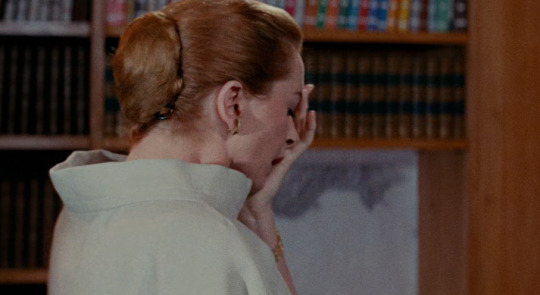
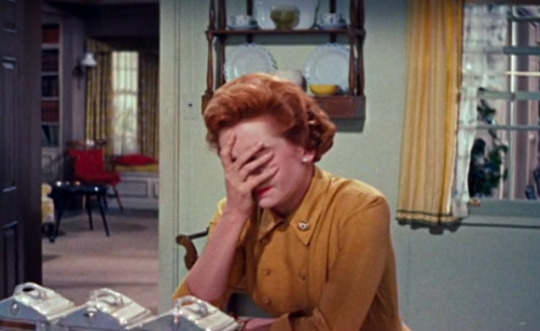
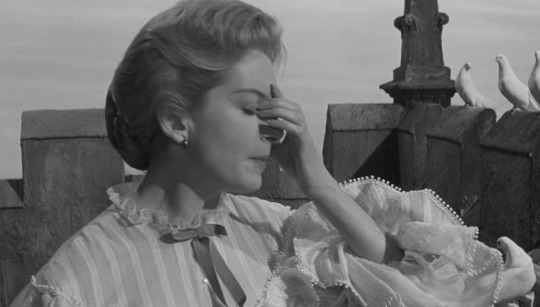
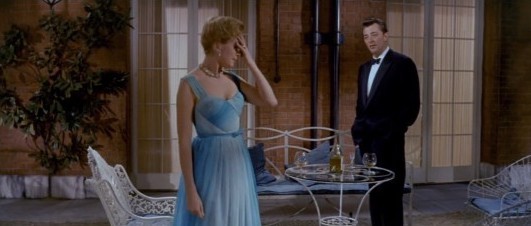


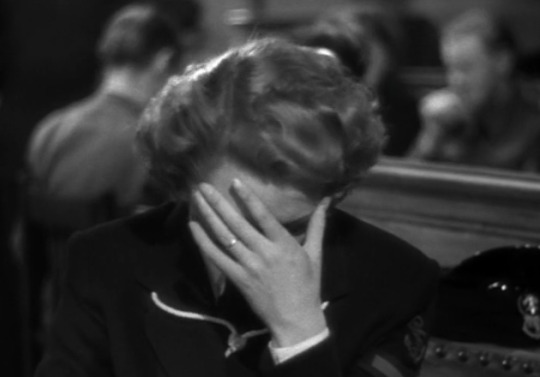
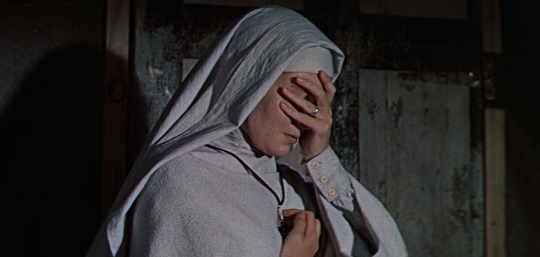
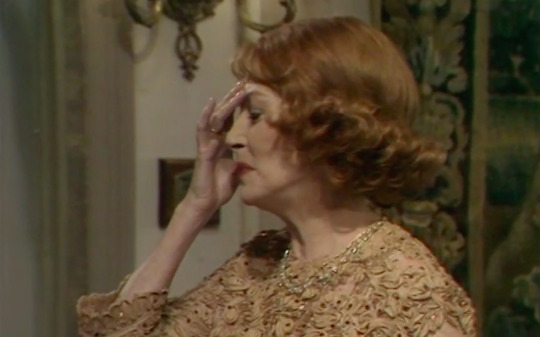
Deborah Kerr + 🤦🏼♀️
bonjour tristesse (1958) / tea and sympathy (1965) / the innocents (1961) / the grass is greener (1960) / beloved infidel (1959) / the naked edge (1961) / vacation from marriage (1945) / heaven knows, mr. allison (1957) / a song at twilight (1982)
#deborah kerr#this is going to be constantly updated as i go through her filmography#look! a post for me and one other person on here he he keep scrolling if this doesn't interest you <3
800 notes
·
View notes
Photo

Perfect Strangers (Alexander Korda, 1945)
#Perfect Strangers#Alexander Korda#window#b&w#Deborah Kerr#1945#London#Vacation from marriage#submission
20 notes
·
View notes